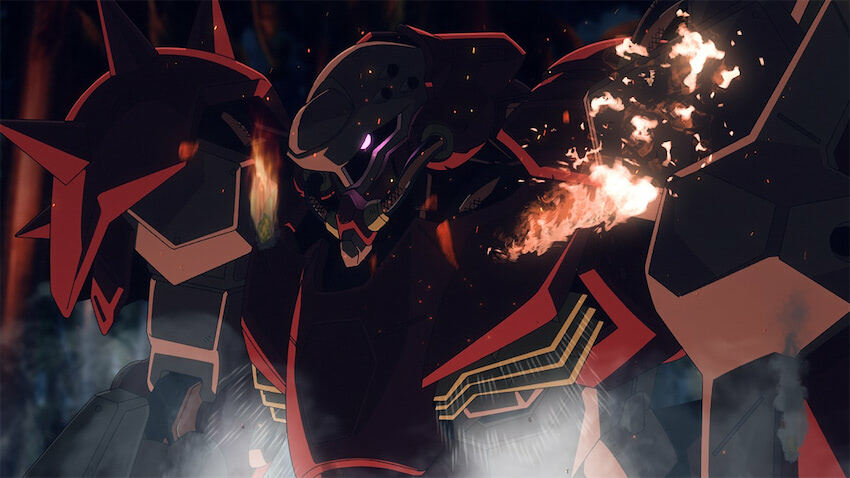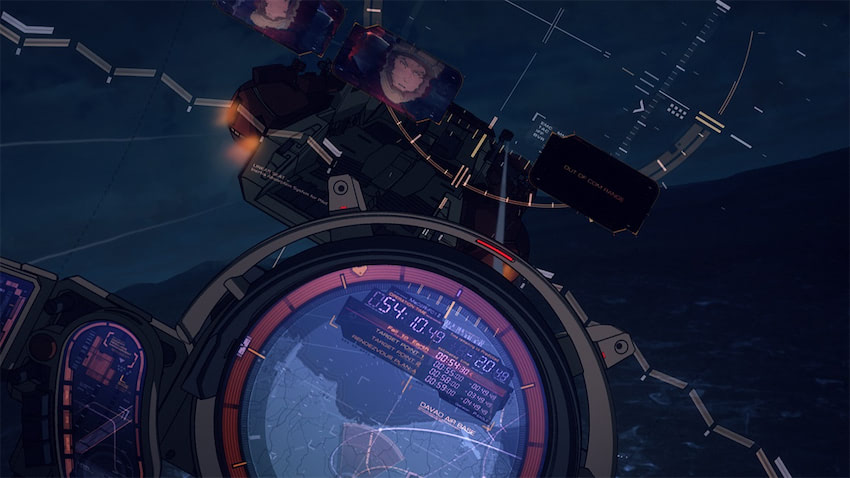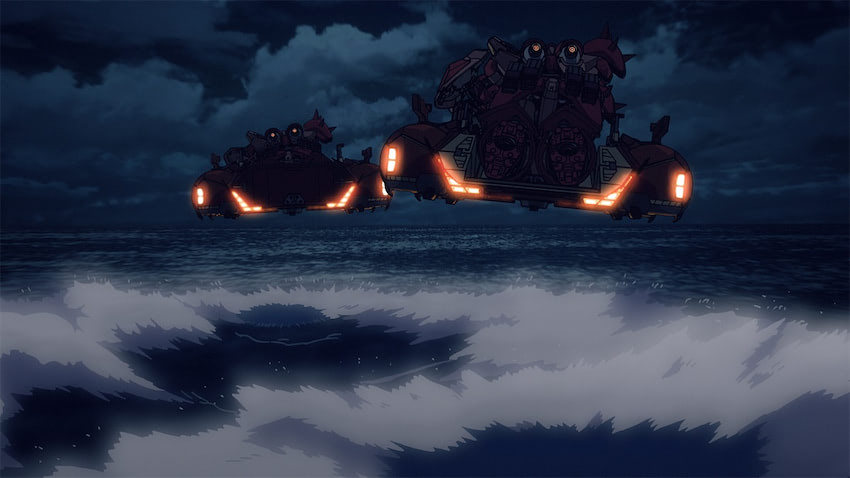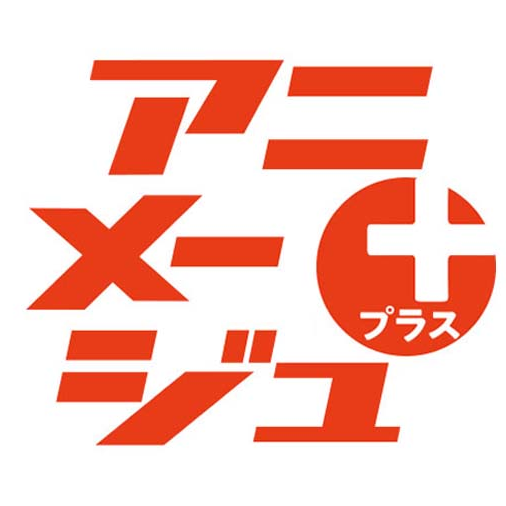Shukou Murase, director for Hathaway’s Flash, was very particular about the modeling for the Messer
Author: Makoto Ishii
The last of our special features on “Mobile Suit Gundam: Hathaway’s Flash,” the latest installment in the Gundam series currently in theaters nationwide, is with CG Director Tomohiro Fujie. We asked him about the modeling of the mobile suits, one of the main highlights of the film, and what his intentions were in directing the imagery, plus some behind-the-scenes work on the CG production of the film.

CG Director Tomohiro Fujie
――How did you get involved with working on “Hathaway” in the first place?
Fujie: I’d effectively been working as a full-time CG director at Sunrise’s Studio 1 from the time the studio was producing “Gundam Unicorn” and “Hathaway” ended up being a natural transition for me after my work with “Gundam NT.”
――It seems like you and Takayuki Masuo will be sharing the CG Director role this time around, but how did you divvy up tasks?
Fujie: Our original plan was to try and use as much of what we’d learned while making “Unicorn” in “Hathaway,” but after several meetings, we came to realize that it’d be insufficient to meet any of Mr. Murase’s (director) requirements for the film. We knew Mr. Masuo had extensive CG-related expertise and was held in high regard by Mr. Murase, so we decided to reach out to him. I ended up being in charge of the cel-animation style I’d done for mobile suits and cockpits in prior works, while Mr. Masuo would handle the mecha, like cars in scenes with real-world landscapes, as well as visual choreography like camera mapping. Ultimately, the two of us ended up splitting tasks according to our respective strengths.
――You mentioned Mr. Murase seemed to have high expectations of the production crew but were his demands really that strict?
Fujie: Animation was the focus of mobile suit scenes in “Unicorn,” and I was primarily responsible for the transformation sequences, subtle movements, and a realistic portrayal of large objects in slow, gradual motion. Personally, I was prepared to use a little more CG in “Hathaway,” but we ended using a lot more CG than I’d expected.
――In other words, there was a lot more CG work?
Fujie: That’s correct. I think we were all expecting a “fifty-fifty balance of mobile suit animation and CG,” but then we found out that we were going to be using CG in a lot of the non-mobile suit scenes. So between CG for the planning stages, storyboard, and the final film, we ended up having to use CG in around 90 percent of the overall production.
――Was the added use of CG something requested by Director Murase and the producer Naohiro Ogata?
Fujie: Yes, they mentioned from the very beginning that they were “hoping to do something close to a full-CG feature.” Admittedly, recent productions have reached a new level of detail, and achieving the best possible quality in detail is definitely something we’re always looking to do as creators. That being said, hand-drawn animation can be labor-intensive and significantly slower. In that sense, 3D models offer a lot more flexibility for action sequences, and I feel like animating mecha with CG has become mainstream. That being said, we have the most talented mecha animators like Seiichi Nakatani, who drew animations for the pivotal scenes.
A Dedication to Realism and Style
――Did Mr. Murase have any requests about a specific image he was looking for with the CG?
Fujie: No, he didn’t request anything specific, but as we were working on it, I could tell he wanted to make sure the final product didn’t look unrealistic. For instance, he wouldn’t alter the models just to try and make them look more stylish in specific scenes, and each cut would be drawn to make it look like an actual camera shot of the CG-rendered models. If we wanted to add perspective shots, it had to be the kind of shot that could be taken with an actual lens. All in all, it was a lot like shooting a live-action film in a virtual 3D space.
――Were you taking a different approach to the mecha designs, considering how you used a lot more CG in the overall production?
Fujie: Up until now, we’d have to take the eventual CG work into account to a certain degree, and the priority was to make the mecha move, but this time around, we tried to make the mecha stylish on their own so that you can recognize the Xi Gundam and Penelope by their silhouettes from any angle. Under Mr. Murase’s direction, there was a lot of communication between the designers and the modeling team. Even if we followed the setting designs, there would still be some portions that wouldn’t look right in 3D, so they could make the necessary adjustments. I’d say they kept the designs at the hand-drawn animation level. While it is possible to nitpick down the very last screw with CG, we didn’t feel that was necessary.
――The Xi Gundam and Penelope have some complex designs, so it sounds like modeling them took a lot of work.
Fujie: Each of those two took about three times the workload of a typical mobile suit. The data itself for those two is especially large, and we also had specific requests from the mecha designers, so those two definitely took a lot more work. There’s a specific suit called the Messer used by Mafty’s side that has its own niche following, and we really had our work cut out for us since both Mr. Murase and the designer were especially particular (laughs).
The Gundam’s square design is easy to make look good as long as you get all the sharp angles down right, but the Messer has a lot of curves, so it tends to look either mediocre or pitiful if you don’t get a perfect balance. We have an external team we always use for MS modeling, but the Messer was the one suit done by our internal staff. I remember that Mr. Murase and the design team discussed the final CG model on-screen to complete the finishing touches.
――Especially after hearing about all the work that was put into it, it’s interesting how the Messer also played a significant part in the film.
Fujie: We put so much time into perfecting it that I feel like the final product was of a quality where we weren’t concerned about it looking better from certain angles. The director even said, “this is definitely the Messer no matter where you look at it from,” during his final pass, so I think the staff members responsible were also able to breathe a sigh of relief when they heard that.
――Which machines did you struggle with most to model?
Fujie: It felt like we were able to create the model for the Xi Gundam that we were looking for, but the Penelope was surprisingly difficult. It’s possible to show the Odysseus Gundam used as its base by drawing fewer lines, but the flares on the legs and the FF (Fixed Flight) unit on the shoulders were too large. The surface of the objects were so large that it made it hard to change the accents of the lines, and it would look flat and unbalanced if we used fewer lines. It took a lot more time than we expected until we could find the right balance with the overall look.
We also had to produce the realistic feel Mr. Murase was looking for, so we couldn’t cheat by changing the size. In that sense, the sub-flight systems used by the Messer and the Earth Federation’s mass-produced Gustav Karl took an exceptionally long time. We had to make sure it was wide enough to fit multiple units on top of it without cramped. In particular, the Galcezons used by the Messers had to be stowed inside the units to fly to the stratosphere, so we had to create a cross-section and consult with the designers to try and find the space to make it fit.

PUBLICATION INFORMATION
Publisher: Animage Plus
Released: 2021.06.17
Author: Makoto Ishii
Type: Online Article



 June 20th, 2021
June 20th, 2021  deackychu
deackychu 



 Posted in
Posted in 
